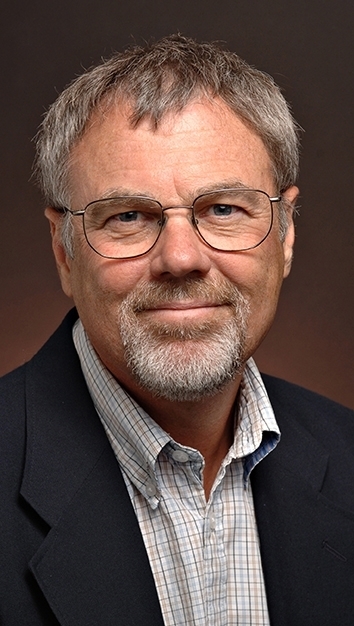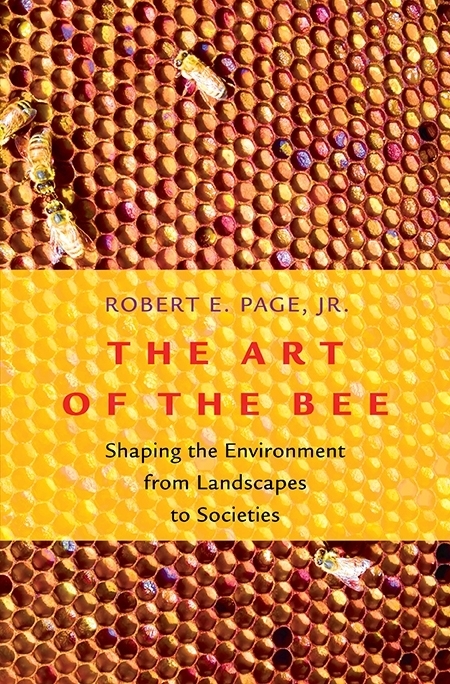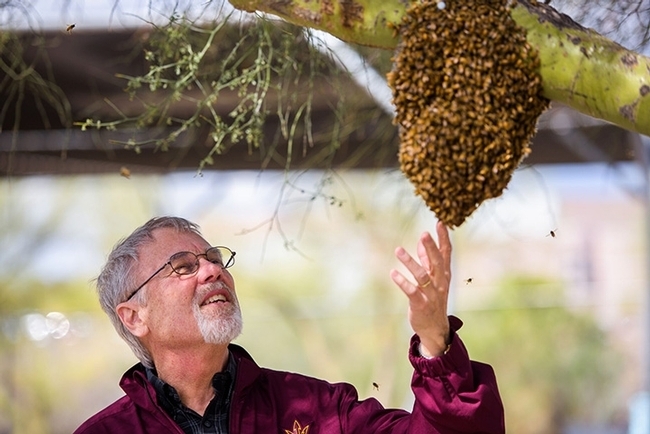
Page, a UC Davis doctoral alumnus, a UC Davis distinguished emeritus professor and former chair of the UC Davis Department of Entomology, wrote an article The Art of the Bee for the journal, and editor Robert Brodschneider interviewed him in a piece titled Robert E. Page Jr--Mapper of the Genetic Architecture of the Honey Bee.
Rob lives and breathes bees, UC Davis, and Arizona State University (ASU). He obtained his doctorate in entomology in 1980 from UC Davis; joined the UC Davis faculty in 1989; and chaired the Department of Entomology from 1999 to 2004. After retiring from UC Davis in 2004, he accepted an appointment at ASU as founding director of the School of Life Sciences. He served as provost of ASU from 2013- 2015, and dean of the College of Liberal Arts and Sciences, 2011-2013.
His research on honey bee behavior and genetics appears in his publications: Queen Rearing and Bee Breeding (1997, with Harry H. Laidlaw Jr., his major professor at UC Davis and "the father of honey bee genetics"); The Spirit of the Hive, Harvard University Press (2013); and The Art of the Bee, Oxford University Press (2020). His 230-plus research papers have been cited more than 20,000 times.
Much of Rob Page's research occurred at UC Davis. For 24 years, from 1989 to 2015, he maintained a honey bee-breeding program, managed by bee breeder-geneticist Kim Fondrk, at the Harry H. Laidlaw Jr. Honey Bee Research Facility on Bee Biology Road, west of the central campus. Their contributions include discovering a link between social behavior and maternal traits in bees. Their work was featured in a cover story in the journal Nature. In all, Nature featured his work on four covers from work mostly done at UC Davis.
Looking to learn more about bees? You'll want to pick up a copy of his book, ;The Art of the Bee: Shaping the Environment from Landscapes to Societies, 2020, Oxford University Press), and/or access his newly created free YouTube channel, The Art of the Bee," at https://www.youtube.com/@artofthebee.

Why did Page create the free and accessible-to-all YouTube Channel? Because that's what Alexander von Humboldt (1769-1859), known as a German geographer, naturalist, explorer, and proponent of Romantic philosophy and science, would have done.
It's about making science understandable.
"Von Humboldt appealed to artists to learn about nature, and ecology, and paint it," Page wrote in the Bee World article. "He believed that artists and writers could do more to advance an understanding of science and nature than the scientific specialist. His plea was for making science understandable to the public, a plea for popular science."
Page's YouTube channel guides the viewer through "the fascinating biology and behavior of the bee," presented in 38 videos ranging from 4 to 27 minutes in length. He organized the videos into six segments that roughly correspond to the nine chapters of the book:
- Landscape Artists
- Environmental Engineers
- The Social Contract
- Superorganisms
- How to Make a Superorganism
- Song of the Queen.
We love this passage from his book:
"The impact of bees on our world is immeasurable. Bees are responsible for the evolution of the vast array of brightly-colored flowers and for engineering the niches of multitudes of plants, animals, and microbes. They've painted our landscapes with flowers through their pollination activities and have evolved the most complex societies to aid their exploitation of the environment."
We can learn so much from the bees...
Attached Images:
